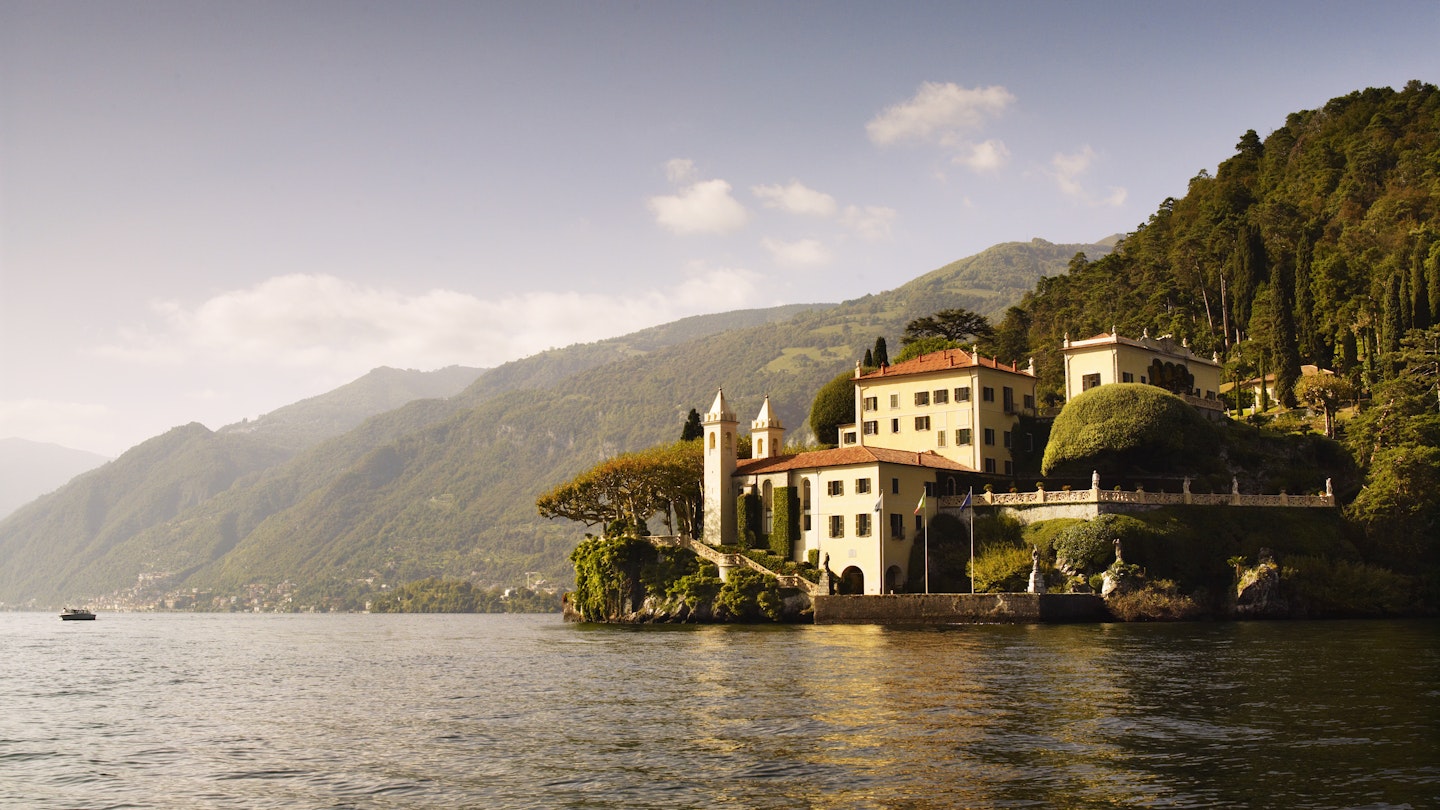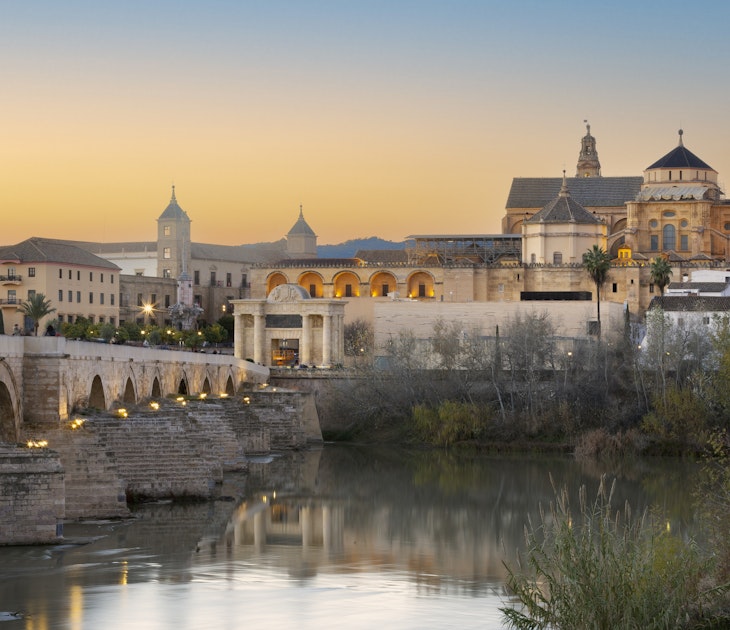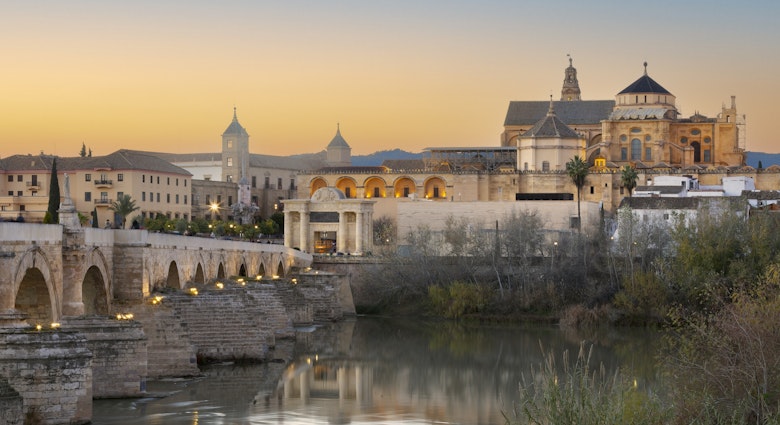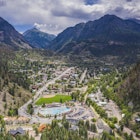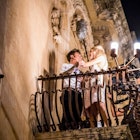We're taking a look through our archive of travel writing to highlight all the ways the world has changed, as well as some of the ways it's stayed the same. In this piece from 2012, writer and historian Alex von Tunzelmann goes beyond the glitz of the Italian Lake District to meet the locals who are preserving centuries-old traditions.
The scene resembles an illumination from a medieval book of hours. Smooth, clear waters glitter in the Italian sun. Elegant villas are hidden among cypress trees and wisteria. Above groves blossoming with camellia, the peaks of the Alps sweep up, piercing through the occasional fluffy cloud into a rich blue sky. A little boat sails across to a fabulous palace, built on its own island in the middle of a lake. All that’s missing are the peasants toiling in the fields. These days, on the shores of the Italian Lakes, you’re more likely to see a Ferrari than a farmhand.
The lakes region has been a holiday destination for the rich and famous for centuries, but in the past few years, it has been inundated like never before. The leader of the celebrity pack is George Clooney. So often is his name dropped in his adopted hometown of Laglio, on the shores of Lake Como, it’s a wonder that they haven’t renamed it Clooneyville. He filmed part of Ocean’s Twelve here, and the lakes have also served as spectacular film locations for the James Bond movie Casino Royale and the three Star Wars prequels.
For those families who have worked here for generations, the blessings are mixed. On one hand, money coming from outside helps to sustain local jobs. On the other, the cost of living has risen alarmingly. Across the Lake region, which ranges along the Italian-Swiss border, traditional ways of life are under threat. Yet, alongside the sports-car traffic and designer boutiques, there are still plenty of people making a living from old-fashioned arts and crafts.

The boatbuilder
"George Clooney is a great advertisement for the region," says Daniele Riva, whose Laglio-based family has been building boats on Lake Como since 1771. "But it’s difficult for people who have been living in Laglio for generations if their families have always rented their homes. Now rents are high, and nobody can afford to buy."
In 1951, Daniele’s family created a unique design – the Riva, an elegant motorboat cruiser made of polished cedar wood that went on to become a Lake Como icon. His workshop is full of Riva boats at different stages of construction or restoration. Rough hulls of young wood suffuse the workshop with a rich and resinous fragrance.
Further along the line is the finished product. The separate elements are so perfectly joined together that the Riva looks as if it might have been carved out of a single tree, the grain of the cedar lustrous under gleaming varnish.
"Boatbuilding is a small industry, but it’s a good one," Daniele says, sanding the side of an old Riva he has taken in for repair. "My kids are aged nine and four. They already love boats, and if they decide to carry the business on I’m sure there will be Rivas built here for generations to come."
As for his famous neighbor, Daniele is sympathetic. "Signor Clooney had three boats, but he asked me to sell them," he says. "If he’s on the lake, everybody gawps at him."
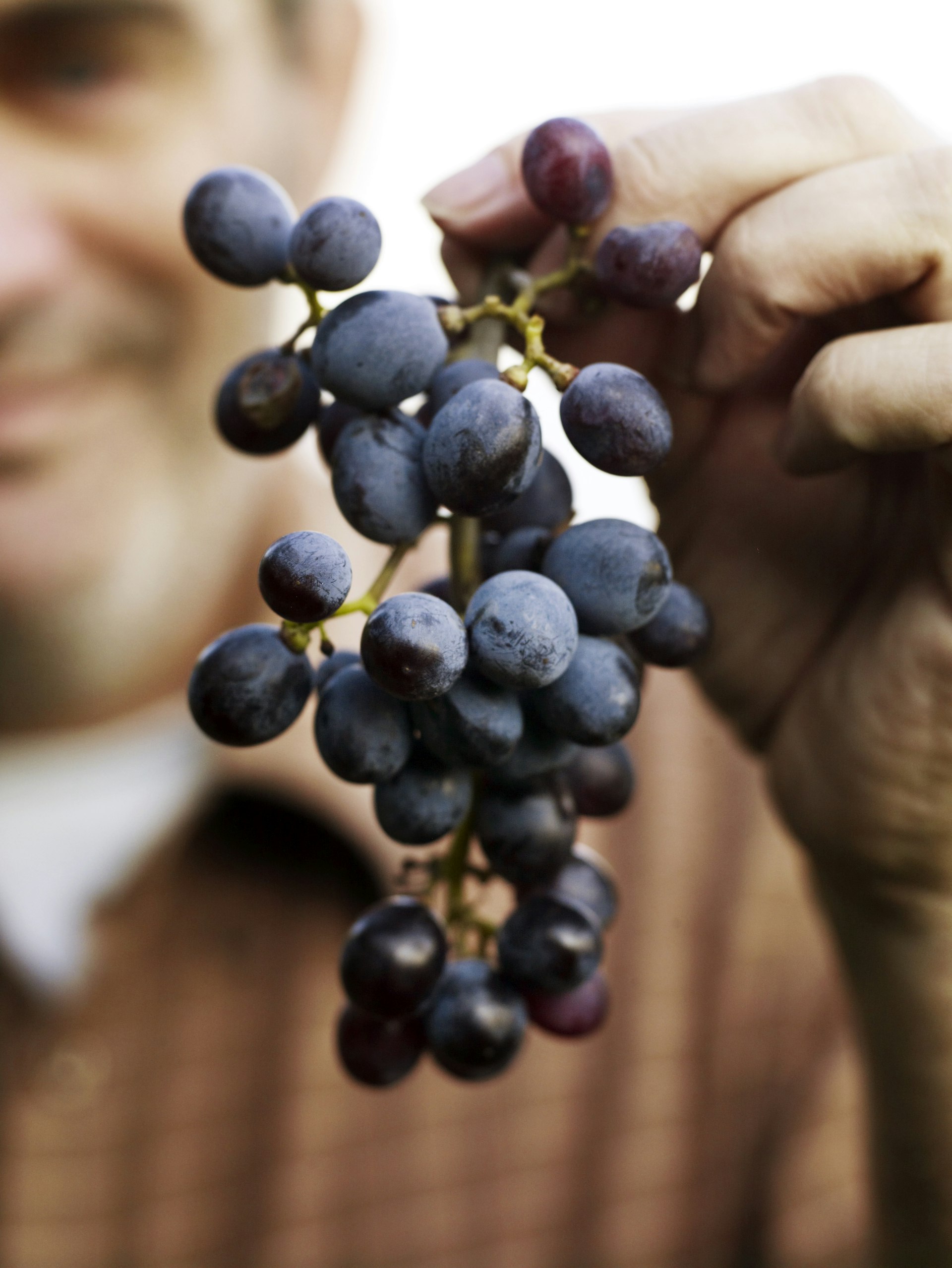
The winemaker
Some people treat the drive up the winding roads that lead north, to the nearby Swiss border and Alpine end of Lake Como, as a further exercise in gawping. On one side is a villa owned by Richard Branson; on the other, Gianni Versace’s former pile, now in the hands of a Russian oligarch.
And a short drive south of the beautiful village of Bellagio are two colossal mansions that once belonged to a former king of Saudi Arabia – "with an atomic bunker beneath both of them," a local restaurateur tells me. Which should prove very useful, no doubt, should anyone ever nuke Switzerland.
At the northern end of the lake, cool air floats down from the Alps and somehow the whole atmosphere seems to relax. Fewer celebrities make their way up here, and something more closely resembling a traditional way of life is thriving.
Above the terracotta roofs of the commune of Domaso, terraces have been cut into the steep slope amid clumps of wild asparagus, trails of ivy and fresh-scented mint bushes. Gnarled vines curl around simple wooden frames.
Daniele Travi’s family has tended this Domasino estate for more than 200 years. Though he is now of retirement age, Daniele scrambles up the hillside like a teenager, eager to show off the oldest vines. Some, dating back centuries, have grown as thick as a person’s thigh.
"I started this as a hobby," says Daniele. "I’m a metallurgist by trade. But now the wine has turned into a company."
As a child, Daniele would trample grapes with his grandfather. Production methods are mechanized today, but he is still focused on tradition.
"We are reintroducing the rosseia – an old, rare grape variety," Daniele says. "It has a long history. Our most famous local writer of classical times, Pliny the elder, mentioned it. Yet with industrialization in the 1960s, it almost disappeared." He laughs and gestures at the abundant vines. "Now we are recovering."

The cook
Within 10 minutes of leaving the golden-hued lakeside wine country and joining the road to Switzerland, the climate and the scenery become distinctively Alpine. Lake Lugano is set in a valley of extraordinary beauty, half in Italy and half in Switzerland. This region, known as Ticino, is home to most of the five percent of Swiss people who are Italian speakers. It is also home to another clutch of the international super-rich, who prefer – as the local joke goes – to live the Italian lifestyle with Swiss organization.
Away from the expensive restaurants that line Lugano’s shore, authentic Ticinese cuisine is simple and delicious. When locals invite guests to eat in a grotto, they do not mean a cave. A Ticinese grotto is an old-fashioned type of restaurant in a cottage, serving one or two homemade dishes. The usual dishes are minestrone and polenta with stew.
Grotto Pierino is next to the San Gottardo church in the hills above Lugano, off the beaten path and therefore quite possibly unknown to celebrities. It was opened 43 years ago by the late Pierino Cassina to feed pilgrims who hiked to the church. Now, his daughter-in-law, Maria, runs the grotto.
"I’m from Portugal," Maria explains. "But I married into this Ticinese family and learned to cook like this from my mother-in-law. In a grotto, the food must be Ticinese. Some places that call themselves ‘grottos’ now serve a whole range of dishes, but that makes them restaurants – which are really a different thing. A grotto is a family place."
She takes a long wooden paddle, the shape and size of a hockey stick, and stirs the copper cauldron of buckwheat polenta, which bubbles away volcanically over the open fire.
The grotto is packed for lunch. Most of the diners are neighbors and friends of the family. Everybody seems to know each other by name, laughing and slapping each other on the back. Today, Maria serves the polenta with a thick, savory rabbit stew and sliced beef in red wine. The meal finishes with nocino – a local grappa the color of tar, infused with cloves and walnuts. The stuffed head of a deer, which was shot by Pierino in Caccia in 1977, stares balefully at the bar, as if it wouldn’t mind a glass itself.

The puppet makers
On the other side of Lugano is the tiny hamlet of Bedigliora, built higgledy-piggledy along a winding road next to a 17th-century church. Just across the square, down a cobbled alley, is a house with frescoes of Italy’s most famous puppet, Pinocchio, painted on the plaster walls. This is the home of identical twins Giannina Tenti and Angela Leuenberger-Tenti. They open the door together – two identical ladies complete with identical neatly bobbed hair and identical broad smiles of welcome.
Seven years ago, in a coincidence that seems to be common to some twins, Angela and Giannina suffered serious illnesses. They retired to pursue their shared dream of making puppets. Fantastical examples of these – fairies, goblins, mermaids, even a puppet of the Dalai Lama – hang from exposed and painted wooden beams in their living room. Beside a crackling fire, Angela and Giannina are hard at work sculpting, trimming, painting and sewing. Bedigliora, the cottage and the twins all look like something from a fairytale.
"Every puppet is like a baby," explains Angela. "We can’t make two identical – even with us being identical twins!"
"You can tell who made which puppet," adds Giannina, "because they reflect our personalities. Angela’s are cheerful and outgoing, while mine look a little shyer."
Angela and Giannina’s workshop contains a personal history of Bedigliora. Many puppets represent local characters, friends and family.
In the village’s pretty church, the twins get out identical guitars and perform Amazing Grace in Italian, Swiss-German, English and Ticinese. "Welcoming visitors with music is a Bedigliora tradition," Angela explains. It’s one that everybody seems happy to keep going strong.

The fishers
Over a ridge, another lake straddles the border between Switzerland and Italy. Lake Maggiore is a deep, wide, blue ribbon of water twisting from the Alps to the plains. North of the industrial city of Arona on the western side, its shores are thickly wooded and dotted with elegant but sleepy towns. Maggiore is less flashy and more sedate and charmingly old-fashioned than Como.
It’s dawn, and mist clings to the surface of Lake Maggiore. The still waters reflect the sky: a pale duck-egg blue above and below.
Daniele Ruffoni steers his little boat out of Belgirate’s harbor. His mate, Stefano, stoops to catch the end of a net before hauling it in. Wild whitefish flop and twist in the morning light as the delicate net drags them into the boat. With a thud, Stefano heaves a fat silver perch in after them.
"It’s sad," Daniele muses, "but fishing on the lake is going to die out." Beside him, Stefano finds a clump of weed in the net and lobs it back into the water with a splash. "I began 20 years ago, when I was 21. Now, the youngest fisherman on the lake is 35. The working day begins at 2 am. Young people today don’t want to do it."
Daniele’s family is from the Isola dei Pescatori (Fishermen’s Island), one of the three inhabited islands in the Italian part of Lake Maggiore. The fabulously wealthy Borromeo family, who built enchanting palaces and gardens on them in the 16th and 17th centuries, owns the other two islands, now open to the public. Isola dei Pescatori remains a warren of crumbling fishermen’s cottages, though restaurants and shops catering to tourists have popped up along the main avenues and lakefront. Fishing also accounts for a large population of feral but conspicuously well-fed cats.
"It’s sad for me that this is going to end," admits Daniele, "but times change. Most lake fish are farmed now." He docks at the stone quayside in Belgirate, next to a lean-to beneath the lakeside road dedicated to the Amici della Barca, or "Friends of the Boat." Here, Daniele, Stefano and the lake’s other remaining fishermen meet at night to drink beer, eat prosciutto and tell tales of the past. Stefano leaps off, and the two men set about preparing the day’s catch for sale.

The sculptor
Further around the shore and up again towards the Ossola valley, another of the region’s historical industries is flourishing. Candoglia marble – a distinctive pink and white stone streaked with grey – has been taken from the hills here for centuries. In 1387, the Visconti family declared its quarry the property of the Duomo, the cathedral in Milan then just beginning to be built. After an impressive 579 years of construction, the final gate of the Duomo was opened in 1965.
The cathedral now requires constant maintenance. In the village of Candoglia, Lino Rossini has pieces of the Duomo’s Gothic embellishments lying around his atelier. There is a length of one side of a 200-year-old arch turned black and porous with pollution. What once were precisely carved vine leaves are reduced to charred, indistinct lumps.
"See this?" says Lino. He takes out a chisel and taps lightly on the old piece. A brittle lump splits off as if it were molded from sugar. Lino crumbles it easily in his hand. "Don’t worry," he says. "I will make a new one."
He gestures to a new block of marble, half-carved into a perfect replica of the old arch. New, sharp-edged vine leaves emerge from the stone as if they had just grown there. Drifts of sparkling white marble dust surround the block. In the warmth of an Italian day, it looks incongruously like freshly fallen snow.
"The Duomo is like an illustrated sculpture book," he says. "In its design, you can read the history of Italy." He points to a sculpted panel of a pumpkin. "When new things were imported from America for the first time in the 15th century, they were commemorated with a panel in the Duomo. There are exotic flowers. And potatoes. They were very exotic then too."
Lino has been working with marble since he was just 15 years old. And now, half a century later, he appears to have lost none of his enthusiasm.
"I love everything about my job," he enthuses. "Each restoration piece is different. My son Nicolao works with me now. He will keep the Duomo looking beautiful for many years to come."
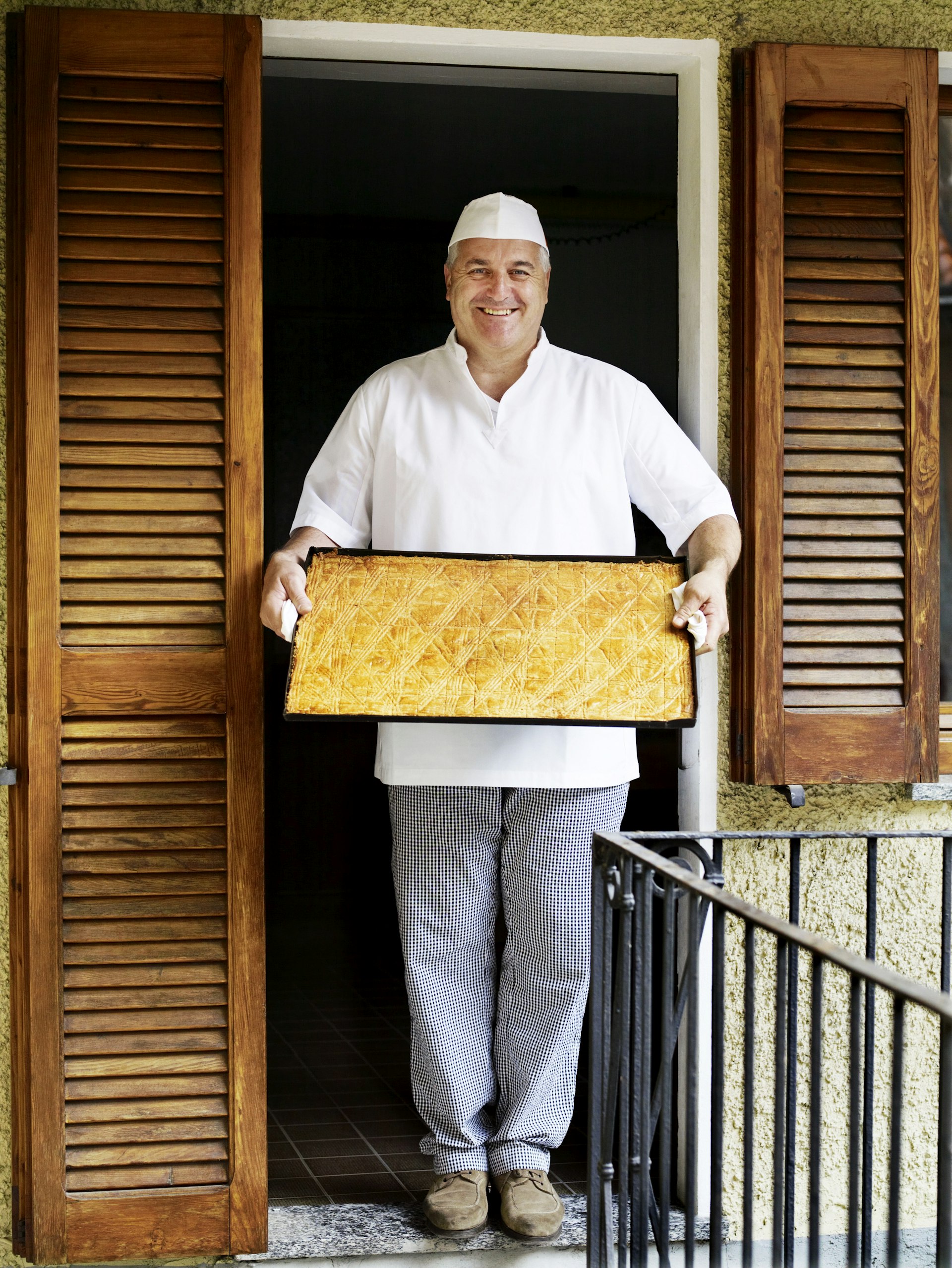
The baker
On the road back from the quarries is the picture-book town of Mergozzo. Down a back-street from the pastel-colored lakefront square, the sweet smell of baking leads to Al Vecchio Fornaio Pasticcere, established in 1957 by Patrizia Baroni’s mother and father. Today, Patrizia still runs this bakery, making traditional fugascina biscuits from butter, flour, sugar, egg, lemon and Marsala wine with her husband, Giordano Pavesi.
"I’ve been a baker since I was 13 years old, but at another shop," says Giordano. "In 1976, I met Patrizia, and three years later I started to work at her parents’ bakery. We’ve been married for 28 years."
The recipe for fugascina biscuits is a folk tradition, first written down in 1857 but undoubtedly much older. "At the beginning of July every year, we celebrate the feast of St Elizabeth," says Giordano. "All the families living here make pastry for these biscuits. Then they bring the pastry here and I bake it in the oven. When you walk around the town on that day, everyone shares their biscuits with you."
"We don’t have children," says Patrizia, "but we hope the boy who works with us will take over the shop one day. It’s very important to us that this carries on. It’s handmade, so it’s good!"
She passes around fugascina biscuits with a tiny cup of strong espresso. The biscuit is light, crumbly and still warm from the oven. It’s impossible not to take another. Patrizia and Giordano smile at each other. Here in Mergozzo, and across the lakes region, there is no doubt that things have changed. Yet the locals, it seems, aren’t ready to give up their traditions just yet.
You might also like:
Travel throwback to Hong Kong: Where worlds collide
Travel throwback: The lost stories of Damascus
Local guides reveal the secrets of Italy's Dolomites
Get more travel inspiration, tips and exclusive offers sent straight to your inbox with our weekly newsletter.
